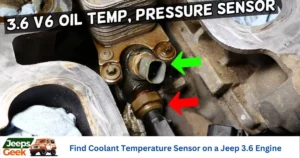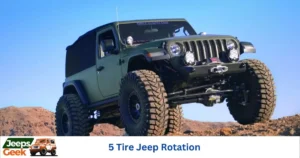Owning a Jeep with a 6-speed manual transmission brings joy to many enthusiasts, but like any mechanical system, it can face challenges.
From difficulties in gear shifting to potential clutch problems, we’ll explore each problem and provide insights on prevention and resolution.
Whether you’re an off-road adventurer or a daily commuter, understanding these transmission issues can help you maintain your Jeep’s performance and address problems promptly.
The Jeep 6-speed manual transmission is well-liked by people who enjoy off-road adventures and driving manual cars. It creates a direct connection between the driver and the vehicle, making the driving experience exciting.
However, as time passes, you might face some issues with the Jeep 6-speed manual transmission.
I’ll explain these problems and provide solutions. I’ll also share tips on how to take good care of your Jeep manual transmission so that it lasts longer and performs at its best.
I’ll mention signs that may indicate your transmission is not working well.
The Jeep 6 Speed Manual Transmission
Jeep fans frequently treasure the driving experience that a 6-speed manual transmission provides. This transmission system allows drivers to have more control over their off-road adventures or city commutes.
The manual gearbox, also known as a stick shift, engages the driver with a more hands-on approach, enhancing the overall driving pleasure for Jeep owners.
Jeeps have used a transmission called the New Venture Gear 370 (or NSG370) since 2005. This transmission was first used in the Jeep Wrangler TJ and has been used in all the newer models, like the JK, JL, and JLU.
People like it because it’s strong and can handle both regular driving and off-road adventures. The NSG370, made by Getrag, is a transmission made of aluminum. It weighs 89 pounds, can handle a torque of 272 pound-feet, and needs 1.9 quarts of fluid.
It’s a close-ratio transmission, which means the gears are close together. This helps with speeding up and using less fuel.
The clutch, which connects and disconnects the transmission, works smoothly because of a hydraulic system.
Each gear has something called multi-cone synchronizers. These help the gears work together smoothly and make gear shifts happen without grinding.
The NSG370 is often paired with a transfer case like the NV241 or NV241OR. This transfer case helps with traction and off-road abilities by switching between 2WD and 4WD modes.
To keep the NSG370 working well, it needs regular maintenance. Taking care of it ensures it stays in good shape for a long time.
Read also: Uconnect Update File Not Supported
Common Jeep 6-Speed Manual Transmission Problems
Common problems with Jeep’s 6-speed manual transmission include difficult gear shifting, clutch pressure plate failure, and premature clutch wear. These issues may lead to challenges in smooth operation and overall performance.
Regular maintenance and prompt attention to symptoms can help address these concerns and ensure a reliable driving experience.
While the Jeep 6-speed manual transmission is usually reliable and lasts a long time, it might encounter issues as time goes on. It’s important to address these common problems to ensure a smooth and safe ride.
Let’s explore the possible reasons and solutions for the usual challenges with the Jeep 6-speed manual transmission so that you can effectively manage these issues.
Read also: Troubleshooting Jeep Backup Camera Black Screen
Difficult or Noisy Gear Shifting
One of the common issues Jeep owners may encounter is difficulty or noise during gear shifting. This can manifest as a challenge in smoothly transitioning between gears or unusual sounds when engaging the clutch. Proper maintenance and regular checks can help alleviate this problem.
If you’re having trouble shifting gears or hear strange noises when changing gears, it could mean there’s an issue with your transmission. This might be because the synchronizers are worn or damaged, there’s a problem with the clutch linkage, or the clutch system isn’t adjusted correctly.
To fix this:
1. Check the transmission and clutch systems.
2. If the synchronizers are worn, consider replacing them.
3. If the clutch linkage or pedal isn’t working right, you might need to adjust them for proper operation.
Clutch Pressure Plate Failure
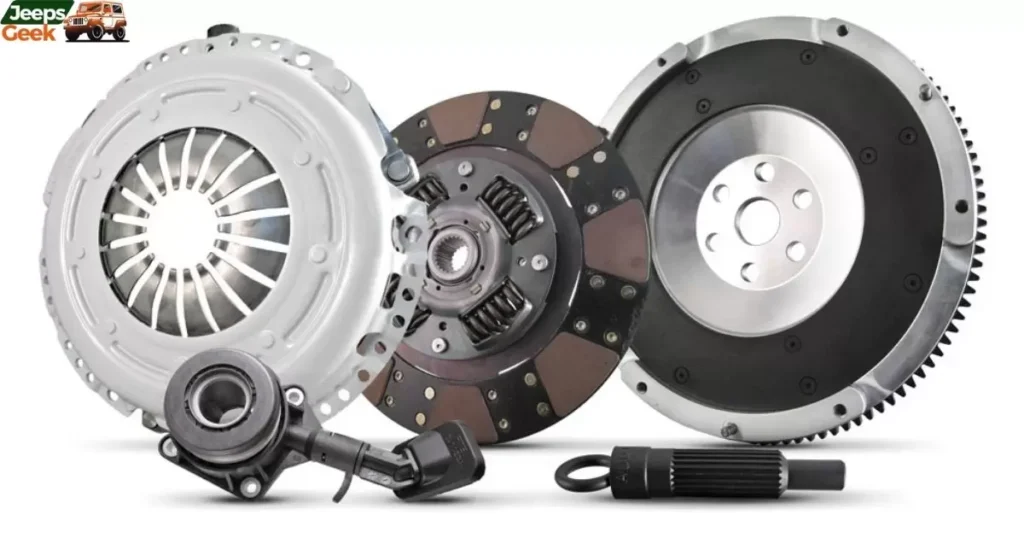
Clutch pressure plate failure is another concern. A faulty pressure plate can result in problems with disengaging or engaging the clutch. Signs may include difficulty depressing the clutch pedal or unusual noises during operation. Prompt replacement of the pressure plate is essential to maintaining optimal performance.
The part called the pressure plate, which pushes on the clutch disc, might get too hot and break in certain situations. If this happens, it could make the transmission case crack and fall apart.
Pieces from the broken pressure plate might touch other nearby parts and start a fire. Also, the parts that fall off could be dangerous for people on the road and increase the chance of getting hurt.
In 2021, Jeep recalled specific models with a 6-speed manual transmission because of this issue. They found out it was a problem with the software that made the pressure plate overheat.
Jeep tells owners of the affected cars to go to a licensed dealership to prevent the pressure plate from getting damaged. The technicians there will install software that limits how much power the engine can make when the clutch assembly gets too hot.
Read also: Service Electronic Stability Control Jeep Warning
Clutch Slippage
Clutch slippage occurs when there is an unintended disengagement of the clutch. This can lead to a lack of power transfer from the engine to the transmission, causing a decrease in overall performance. Addressing this issue often involves adjusting or replacing the clutch components.
A frequent problem in manual transmissions is called clutch slippage. This occurs when the transmission doesn’t fully connect, so it doesn’t get all the power from the engine. Wear-on components such as the release bearing or clutch disc frequently result in clutch slippage.
If you notice wear in the clutch system, it’s important to address it. Depending on how worn the parts are, you might need to replace them. Simply check for any worn-out components in the clutch system and replace them as needed.
Premature clutch wear
Some Jeep owners struggle with premature clutch wear. Factors such as driving habits, terrain, and maintenance practices can contribute to the accelerated wear of the clutch components.
Regular inspections and adherence to recommended maintenance schedules are crucial to preventing premature wear.
Driving aggressively, using the clutch incorrectly, or having a faulty clutch system can make the clutch wear out too soon. Signs like the clutch slipping, difficulty shifting gears, or a shaky clutch pedal mean the clutch might be wearing out early.
To prevent this, drive carefully by not keeping your foot on the clutch unnecessarily and avoiding too much clutch slipping. Regularly check and adjust the clutch. If you notice significant wear, you might need to replace some clutch parts.
Read also: Is SiriusXM Guardian Worth It?
Shifter Pops Off First Gear
People who own Jeep Wranglers have a problem where the gear shifter pops out of first gear, especially when starting to drive. This can make driving the Jeep less fun because of this bothersome issue.
One possible solution is to take off the gear shifter knob and cover to get to the inside cover and make sure it’s in the right position. Another way to fix it is by using a soft material to stop the shifter from hitting the housing. In some cases, you might need to replace the shifter itself.
Shifter Pops Off Reverse Gear
Some Jeep owners may face a problem where the reverse gear pops out, especially after a body lift. This happens when something blocks the gear from engaging properly.
To fix it, take off the outer and inner boots of the shifter and check its position and inner boot alignment. Trim the inner boot if needed to make sure it fits well. In more serious cases, you might need a new reverse gear assembly.
Input Shaft Bearing Noise
Unusual noises, particularly those related to input shaft bearings, can be a cause for concern. These noises may indicate wear or damage to internal transmission components. Timely diagnosis and repair are vital to prevent further damage and ensure the longevity of the transmission.
To fix it for a long time, you should replace the worn input shaft bearing and also check the other parts connected to it. Be careful when changing the bearings, and make sure to put them in the right way.
Excessive Vibration
Excessive vibration during operation can be a sign of various issues, such as imbalanced components or misalignment. Jeep owners should pay attention to any unusual vibrations and seek professional assistance to identify and rectify the underlying problem.
If your car’s clutch is shaking too much when you engage it, there could be a few reasons. It might be because the clutch disc is worn, the flywheel is broken, or there’s an issue with how the transmission parts are aligned.
To fix this, you need to figure out why it’s vibrating so much and then make the needed repairs. Check for any worn-out parts in the clutch system. Make sure all the transmission parts are lined up correctly, and if anything is worn, replace it.
If the flywheel is damaged, either smooth it out or get a new one. Doing these things will help your clutch work smoothly again.
Premature Wear and Tear of Internal Transmission Parts
Over time, the internal parts of the transmission may experience wear and tear. Regular maintenance and fluid checks can help mitigate this issue, ensuring that the transmission components function optimally and extending the overall lifespan of the transmission.
While the Jeep 6-speed manual transmission provides a thrilling driving experience, owners need to be aware of potential problems. Regular maintenance, prompt diagnosis, and timely repairs are key to addressing and preventing issues, allowing Jeep enthusiasts to enjoy the full benefits of their manual transmission vehicles.
Make sure to use the correct gear oil to avoid parts inside wearing out too soon. The NSG370 transmission needs MS-9224 gear oil, and using a different kind can lead to problems with shifting gears.
Regular lubricants you find in stores might not protect the transmission enough, and that could make it stop working properly.
Remember, how you use and take care of your vehicle, as well as how you drive, can affect whether these problems happen or not.
Maintaining the Jeep 6-Speed Manual Transmission
To keep your Jeep’s 6-speed manual transmission in top shape, regularly check and change the transmission fluid as recommended. Use the correct gear oil specified in your Jeep’s manual to ensure smooth operation and reduced friction.
Adopting smooth driving habits, avoiding aggressive maneuvers, and practicing proper clutch usage contribute to the longevity of your manual transmission.
How long your transmission lasts and how well it works depends on taking care of it regularly. Here’s how you can keep your transmission in great shape:
Fluid Checks and Changes
Regular fluid checks and changes are crucial for maintaining the health of your Jeep’s 6-speed manual transmission. Transmission fluid lubricates the gears, ensuring smooth operation.
Check the fluid level regularly and follow the manufacturer’s recommendations for fluid changes. Clean and sufficient fluid contributes to the longevity of the transmission.
Keep an eye on the transmission fluid level. If it’s too low or dirty, it can make your car shift poorly and cause more wear and tear.
Use the correct gear oil
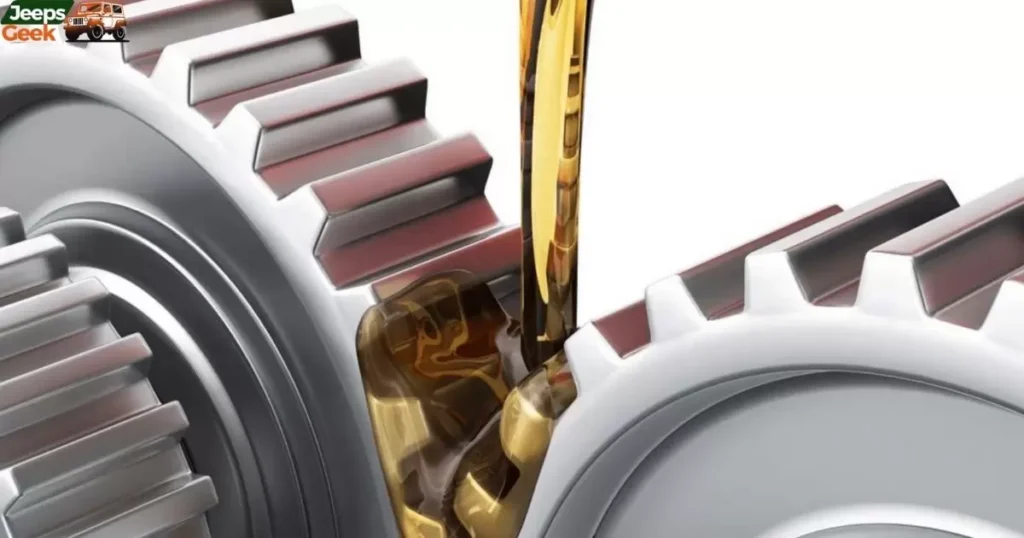
Using the correct gear oil is essential for optimal transmission performance. Different transmissions require specific types of gear oils.
Refer to your Jeep’s manual to identify the recommended gear oil. Using the right oil helps reduce friction and heat, promoting smoother gear shifts.
Make sure to use the gear oil that the car maker suggests for your manual transmission. Using the correct oil is crucial for keeping everything lubricated properly, as different transmissions might need different types or thicknesses of oil.
Clutch System Inspection
Periodic inspection of the clutch system is vital for preventing potential issues. Check for signs of wear, such as a slipping clutch or difficulty engaging gears. Promptly addressing clutch problems can prevent more significant transmission issues down the line.
Take a look at your clutch system now and then. Check for any damage, and make sure the clutch pedal moves freely.
If you notice any issues like slipping, trouble shifting, or strange vibrations, it might mean something is wrong.
Avoid aggressive driving habits
Aggressive driving, such as sudden acceleration, hard braking, and abrupt gear shifts, can strain the transmission. To maintain the health of your Jeep’s manual transmission, adopt a smoother driving style. Gradual acceleration and deceleration contribute to reduced wear on transmission components.
Proper Clutch Usage
Proper clutch usage is key to preventing premature wear. Avoid resting your foot on the clutch pedal while driving, as this can cause unnecessary pressure on the clutch components. Engage and disengage the clutch smoothly to minimize stress on the transmission.
Avoid Stepping on the Brake Unnecessarily
Don’t keep your foot on the brake all the time. It makes the engine and transmission work too hard, causing them to wear out faster. Only use the brake when needed.
Smooth Shifting
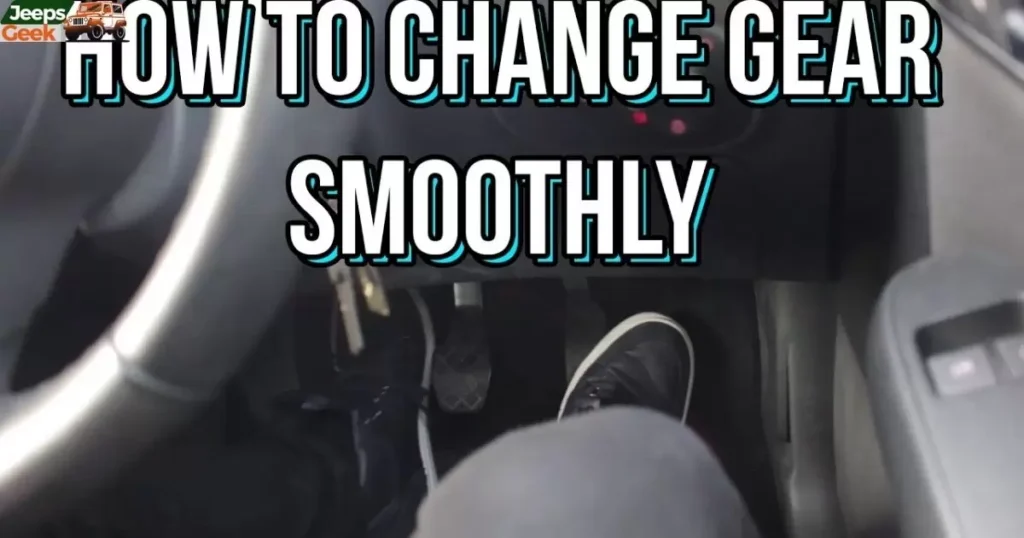
Practice smooth shifting to preserve the integrity of your manual transmission. Avoid forcing the shifter into gear or grinding gears during shifts. A gentle and deliberate shifting technique helps prevent premature wear on the transmission’s synchronizers and gears.
Transfer Case Maintenance
If your Jeep is equipped with a 4-wheel drive system, ensure regular maintenance of the transfer case. Follow the manufacturer’s recommendations for fluid changes and inspections. A well-maintained transfer case contributes to the overall health of the manual transmission.
Be Mindful of Towing
If you use your Jeep for towing, be mindful of the weight limits and ensure proper towing techniques. Excessive towing loads can strain the transmission. Follow the manufacturer’s towing guidelines to prevent transmission damage.
Warm up your vehicle.
Allow your vehicle to warm up before driving, especially in colder weather. This practice ensures that the transmission fluid is at the optimal temperature for smooth operation. Avoid aggressive driving until the engine and transmission reach operating temperature.
Before driving in colder weather, briefly warm up your Jeep’s engine. This helps the oil flow better and gives enough lubrication to the transmission parts.
By following these simple steps, you can prevent future problems and extend the life of your Jeep’s 6-speed manual transmission.
Symptoms of a Bad Transmission
Symptoms of a bad transmission include difficulty shifting gears, a slipping sensation during acceleration, and unusual noises such as whining or grinding. Additionally, delayed engagement when shifting and transmission fluid leaks are indicators of potential issues. Keep an eye on dashboard warning lights related to the transmission for timely attention to any problems.
Gear Shifting Issues
When it’s tough to shift gears or if you hear grinding when you try, it might mean something’s wrong with the transmission. This can make shifting feel slow, resistant, or not smooth.
Normalising Transmission
A slipping transmission results in a noticeable lack of power, especially during acceleration. If you feel the engine revving without a corresponding increase in speed, it could be a sign of a slipping transmission.
Delayed Engagement:
Delayed engagement, where there’s a delay in the transmission responding after shifting, is a red flag. This can indicate internal issues that need attention.
If there’s a delay between putting your car in gear and it moving, that’s a sign of a problem. You might feel like it takes a bit too long before the car starts moving forward.
Unusual Noises:
Unusual noises during operation, such as whining, clunking, or grinding sounds, may point to transmission problems. These noises should be investigated promptly. These noises are not normal.
Transmission fluid leaks:
Seeing red or brown fluid under your car? That’s not good. It means there’s a leak in the transmission. Low fluid levels can mess with how well things are lubricated and lead to transmission failure.
Overheating:
An overheating transmission can lead to severe damage. If you notice elevated transmission temperatures, it’s essential to identify and address the underlying cause promptly.
Dashboard warning lights:
Some Jeeps have special warning lights just for transmission problems. If you see a “Check Engine” or “Transmission” light, or anything related to the transmission, it’s a sign to get your car checked out.
If you notice any of these signs, getting your car checked and fixing any issues is important. Taking care of transmission problems early can save you money on repairs, keep your Jeep running well, and make sure the transmission lasts a long time.
Features of Jeep 6 Speed Manual Transmission Problems
Jeep’s 6-speed manual transmission may encounter several issues, including difficult or noisy gear shifting, clutch pressure plate failure, and clutch slippage.
Other features of concern involve premature clutch wear, instances of the shifter popping off first or reverse gear, and input shaft bearing noise.
Excessive vibration, premature wear of internal transmission parts, and challenges associated with towing may be notable features. Understanding these aspects helps Jeep owners address and prevent potential problems for a smoother driving experience.
Pros and Cons of Jeep 6 Speed Manual Transmission Problems
| Pros | Cons |
| Engaging Driving Experience | Repair Costs: Manual transmission problems may incur expenses, particularly for components like the clutch and gearbox. |
| Early Detection of Maintenance Needs | Potential Inconvenience: Addressing transmission issues may lead to vehicle downtime, causing inconvenience for daily use or planned activities. |
This table highlights the pros and cons of Jeep 6 Speed Manual Transmission Problems, emphasizing the engaging driving experience and early detection of maintenance needs as positive aspects while acknowledging the potential repair costs and inconvenience as drawbacks.
Future Scope: Advancements in Jeep 6-Speed Manual Transmission Solutions
As automotive technology continues to evolve, the future scope for addressing Jeep 6-speed manual transmission problems holds promising opportunities.
Anticipate advancements in smart diagnostics, leveraging artificial intelligence and sensor technologies to swiftly identify and troubleshoot issues.
Improvements in materials and design may enhance the durability of transmission components, providing Jeep enthusiasts with a more robust and reliable driving experience. Stay tuned for innovative solutions that aim to elevate the performance and longevity of the iconic Jeep 6-speed manual transmission.
FAQs
Are Jeep manual transmissions reliable?
Generally, Jeep manual transmissions are known for their reliability. Many Jeep enthusiasts appreciate the durability and control offered by manual transmissions, especially in off-road situations. Regular maintenance and proper usage contribute to their overall reliability.
Do Jeeps have 6-speed manual transmissions?
Yes, some Jeep models are equipped with 6-speed manual transmissions. When driving off-road, especially, drivers who prefer a more involved driving experience tend to prefer the 6-speed manual option. However, not all Jeep models exclusively offer a 6-speed manual transmission.
Are Jeeps known for transmission problems?
While Jeeps are generally considered reliable vehicles, like any brand, they may experience transmission issues from time to time. Regular maintenance and attentive driving can help mitigate these problems. It’s essential to address any signs of transmission issues promptly to prevent further complications.
Are there 6-speed manual transmissions?
Yes, 6-speed manual transmissions are available in various vehicles, including certain Jeep models. Drivers who prefer a manual gearbox for more control over their driving experience value the 6-speed manual option. It provides versatility for both on-road and off-road driving.
Final Words
Regular maintenance and attentive driving habits are paramount for preserving the health of your Jeep’s 6-speed manual transmission.
By following these guidelines and promptly addressing any symptoms of transmission issues, you can ensure a smoother and more reliable driving experience.
Remember, a well-maintained transmission contributes to the overall longevity and performance of your Jeep.
The Jeep 6-speed manual transmission makes driving a Jeep fun, but sometimes it can have issues. It’s important to take care of it regularly to keep it working well.
If you notice any problems with the transmission, make notes about what happened and what you were doing when it occurred. This will help you explain the issue to the dealership.
To keep your Jeep’s 6-speed manual transmission running smoothly and make driving enjoyable, be proactive with maintenance. Fix any problems as soon as you notice them.

Nicholas Clark at your service, blazing trails with “Jeeps Geek.” As a Jeep aficionado, I’m here to share my passion, troubleshoot any roadblocks, and guide you through the exhilarating world of Jeeps. Let’s hit the trails and make every Jeep adventure unforgettable.









